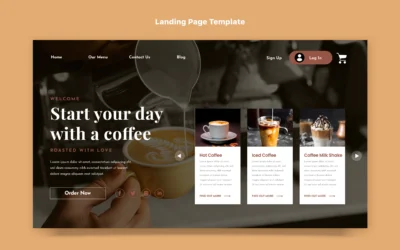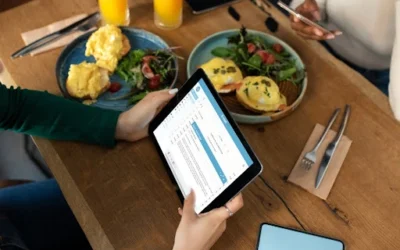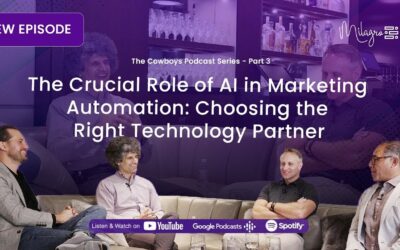What is a Customer Data Platform?
A customer data platform (CDP) is a collection of all of your customers’ information gathered from a variety of sources, including POS, online ordering, waitlist and reservations, gift cards, loyalty, marketing tools, and customer feedback. The goal of a CDP is to monetize this data and turn it into sales & profits. We will discuss all the benefits in detail, however, all of those benefits lead to a singular goal; increased sales & profit.
CDP is used to create a comprehensive, unified view of each individual customer, which can include information such as their first and last name, date of birth, email address, cell phone numbers, favorite items, purchase history, customer satisfaction score, ROI of the customer and push as far as including the customers’ social media profiles and followers. By bringing together all of this data in a single, unified view, a CDP allows restaurants to gain a complete and accurate understanding of each individual customer. This is now imperative to the survival of any restaurant business.
In restaurants, a CDP can be a valuable tool for increasing sales & profits by improving and elevating customer experience, and making more informed and automated business decisions. For example, a CDP can help a restaurant track customer preferences and purchasing habits, which can be used to personalize marketing messages. This can help the restaurant serve its customers better and encourage them to visit more often and spend more money per visit. Additionally, a CDP can be used to understand which marketing channels are most effective at reaching and engaging customers, which can help the restaurant optimize its marketing spend and increase its overall revenue.
Where does the CDP data come from?
A customer data platform (CDP) collects information from a variety of sources in order to create a comprehensive, unified view of each individual customer. This information comes from every customer-facing application which includes POS, online ordering, waitlist and reservations, gift cards, loyalty, marketing tools, and customer feedback to name the major apps.
CDP collects the transactional data of the customer from the POS which is inherently the most important tech inside of any restaurant because it holds the transactional shopping behavior of every customer. This is extremely important because it tells you what your customers are actually spending money on. Such data will include the items ordered, frequency of visit, average spend, number of guests at every visit, times of day that they typically visit the restaurant, average tips and even their preferred payment method.
CDP also collects data from other apps such as online ordering, loyalty and gift card systems, however, all of those are directly integrated to the POS system. These applications are transactional, meaning they involve exchange of money.
Additionally, a CDP collects information from non-transactional but vital applications that may not be integrated to the POS system. These would be your waitlist and reservation system, your customer feedback app or your website.
Overall, a CDP collects information from a variety of sources in order to create that comprehensive view of each individual customer. It is important to know that a non-actionable CDP is as useless as not having a CDP. Afterall, what good is the data, if it cannot be turned into sales & profits, which leads us to the next topic.
Can CDP save restaurants money?
No, CDP is not designed to save you money, it is there for one purpose, to increase sales & profits. It is not a money saving tool, period.
A customer data platform (CDP) increases sales and profits in a number of ways. One of the key ways that a CDP will increase sales is by helping the restaurant optimize its marketing impact. By tracking customer behavior and preferences, a CDP can provide exact insights into which marketing channels are most effective at reaching and engaging customers which in turn helps the restaurant focus its marketing efforts on the channels that drive revenue. This can help a restaurant save money on ineffective marketing tactics as a secondary benefit but its primary goal is again, to increase sales and profits.
An indirect way that a CDP increases sales is by monitoring the customer experience throughout their lifetime. For example, a powerful and actionable CDP monitors the customer satisfaction proactively and turns the net-promoters, those who love your brand, into more 5-star, positive reviews and brand ambassadors online but equally important, it will escalate those potentially negative experiences to the management team to turn these customers into loyal customers. This is where the true power of unified CDP shines.
Overall, while a CDP is not a cost-saving measure, it can provide valuable insights that can help a restaurant make more money through personalized marketing campaigns and as a secondary benefit saves them some money.
What difference can CDP make in marketing?
The main difference between mass marketing and personalized marketing is personalization of the messages as the name suggests. Mass marketing is a marketing approach that focuses on reaching a large, diverse audience with a generic messages. This approach is often used when a restaurant is trying to reach a large number of potential customers with a broad, general message. It does have its use and a great example is a grand opening announcement for a new nearby location or a national marketing campaign for a cause. Something that is unrelated and the same regardless of the target audience.
In contrast, personalized marketing is a marketing approach that focuses on tailoring messages and offers to individual customers based on their specific preferences and behavior. This approach is often used when a restaurant has detailed information about its customers and wants to create personalized experiences that are more likely to engage and convert, i.e. increase frequency of visits or increase average spend.
One key difference between mass marketing and personalized marketing is the level of personalization. Mass marketing is generally not personalized at all, while personalized marketing is tailored to individual customers. This means that personalized marketing is typically more effective at engaging and converting customers, but it is also more time-consuming and resource-intensive than mass marketing because you must build the customer data platform first.
Another key difference between mass marketing and personalized marketing is the level of customization. Mass marketing generally uses generic messages that are the same for all customers, while personalized marketing allows for more customization and flexibility. This means that personalized marketing is typically six times more effective at reaching and engaging customers, but it also requires more detailed customer data and a higher level of expertise to execute effectively, and again, this is why an actional, transactional CDP is required.
Overall, the main difference between mass marketing and personalized marketing is the the level of personalization and customization for a specific target audience. Mass marketing is a broad, generic approach that is often used to reach a large, diverse audience, while personalized marketing is a more tailored, individualized approach that is used to engage and convert specific customers based on their past shopping behavior.
How do I get started with a CDP?
The most important part of any CDP platform is transactional data and therefore, the most important component is a Smart POS system.
A smart POS system is the core foundation of a successful implementation of a CDP. Without the transactional data of the customer, a CDP is simply useless. A Smart POS must be able to gather the relevant customer data and feed it into CDP for processing.
One of the key ways that a smart POS system provides actionable data to a restaurant is by tracking customer purchasing habits and preferences. This information can be used to provide insights into most popular items, which customers are the most valuable, and other information that can help the restaurant make more informed business decisions.
Finally, a smart POS system provides actionable data by integrating with other systems and platforms, such as online ordering, gift cards, 3rd party delivery systems to name a few. This can provide a more comprehensive view of each customer which again, leads to a more effective marketing campaign which then leads to increased sales and profits.
Overall, a smart POS system provides the transactional data to a restaurant by tracking customer behavior, preferences, and engagement, and by integrating with other systems and platforms, it creates the holistic view of the most important data about the customer, the transactional data.
Moving on, the other key parts of a CDP are implementation and integration of online ordering system, waitlist and reservations, customer feedback, 3rd party delivery systems, gift cards and loyalty programs. Each of these apps are crucial because it provides some metrics either about the customers purchase behavior, their preference or their satisfaction.
What is an Actionable Transaction Customer Data Platform?
Let’s get one obvious fact out of the way. That is, no one wants to gather data because they just want to have it. The sole purpose of implementing any sort of data platform is to help you achieve a goal. In business, that goal is to increase sales and profits. So a CDP that simply provides data, is fairly useless, because who has the time to sort through the data, analyze it and make sense of it. So a CDP without actionable and transactional data is useless.
Generic data by itself is the most useless type of data anyone can gather. Transactional data is better than general data but the holy grail is Actionable Transactional Data.
Transactional is clear, that is the spending behavior of your customer. This is very important because it tells you what your customers are actually spending money on.
Actionable data is a lot more difficult. This is every data set combined in order to allow you to make a decision without having to sort it, analyze it and try to figure it out. A great example is, a kids eat free campaign, that should go out Tuesday of every month, to the DFW market locations and it must go out to those who have kids. This is a perfect example of actionable transactional data in use. All you have to do is create the campaign, select how often and what geographical area it must go out to and the target audience, everything else happens automatically.
Additionally, actionable transactional data can help a restaurant understand the times of day that customers are most likely to visit, which can help the restaurant optimize its staffing and operations. For example, if the data shows that customers are most likely to visit the restaurant for lunch, the restaurant can make sure that it has enough staff on hand to provide good service and reduce wait times.
Finally, actionable transactional data helps your restaurant create more personalized experiences for your customers. By using actionalabe transactional data, your restaurant can send targeted offers to customers based on their individual preferences and behavior. This helps your restaurant build stronger relationships with your customers and encourage them to visit the restaurant more often and increase your average check. Building customer loyalty starts with being able to provide exceptional customer experiences.
Actionable Transactional Customer Data Platform by Milagro
Milagro has built the most advanced actionable customer data platform specifically for restaurants. Our comprehensive suite of Smart Solutions eliminates the need for integrations, managing over ten vendors and more importantly having to always think of the next thing to stay ahead of competition. We manage the entire solution for you by providing you managed services in IT and marketing with robust solutions to achieve the only goal that matters, increasing sales and profits.
Our Systems automatically gathers the transactional data, sorts through it, takes actions and measures the return on investment so you can focus on growing your restaurant brand.
Contact us today to learn more.
Get all the insights in the blog post unlocking loyalty app success follow these 4 essential steps.





